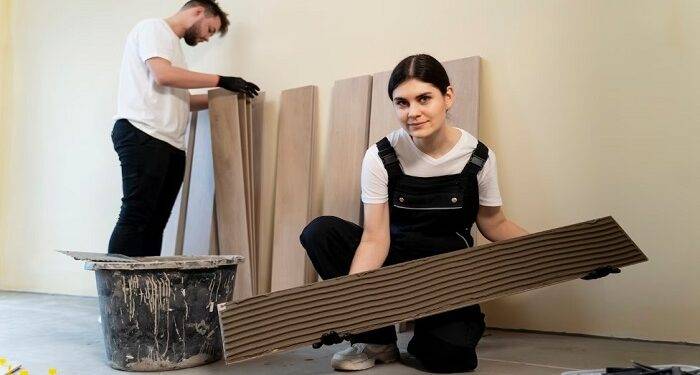Luxury Vinyl Tile (LVT) is a versatile flooring material that mimics natural elements like stone and wood. It’s a great option for modern homes that lean toward sleek, clean lines and minimal furniture. The durable, water-resistant material is also highly customizable and easy to maintain. In this article, we’ll explore how to use LVT in a contemporary home, as well as the benefits that come with it.
Unlike traditional carpet and hardwood floors, which require special vacuuming equipment and cleaning solutions, a simple mop is all that’s needed to remove dirt, dust and other debris from LVT floors. The material is also stain-resistant, so spills and splatters will not soak in and cause permanent damage. This makes LVT a great choice for busy, family-filled homes.
One of the biggest advantages of LVT is that it’s incredibly easy to install. You can glue down the tiles or click them together on a special underlayment, which means you don’t have to rip out your existing floor. This also means that you’ll save money on labor and disposal costs. Plus, the material is a great alternative to expensive and time-consuming hardwood or stone installation.
While some people may associate vinyl with the outdated, kitsch designs of the 1950s and 60s, it’s come a long way in recent years. In fact, many homeowners are choosing to install vinyl in their new homes for its durability, low-cost and stylish aesthetic. In addition to a wide variety of color and pattern options, vinyl is an eco-friendly and affordable floor covering that’s suitable for virtually any room.
If you’re looking to give your new home a more updated look, consider installing vinyl in your kitchen. The durable material can stand up to heavy foot traffic and resists scuffing, chipping and scratching much better than tile or laminate. Plus, it’s water-resistant and can withstand splashes, spills and humidity better than other flooring materials.
Whether you choose a solid vinyl sheet or an engineered wood plank, the neutral tones will complement the rest of your décor and create the perfect backdrop for modern accents. Installing baseboards and quarter-round molding around the perimeter of the space will help protect walls from scuffs and scratches and add an extra level of polish to the overall look.
Another great thing about vinyl is that it can be installed over existing ceramic or other floor tiles. However, it’s important to prep the existing surface correctly before you begin. First, it’s necessary to clean the tile surface and prepare it for a new layer of flooring. Then, you should acclimate the product, adhesive and subfloor to the room’s temperature for 24 to 48 hours before starting the installation. This will help prevent gaps, peaking and other problems after your vinyl planks are laid. Once the installation is complete, you’ll be ready to enjoy your beautiful new vinyl floor!









